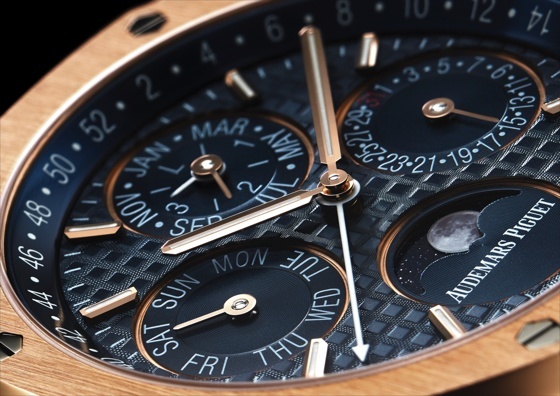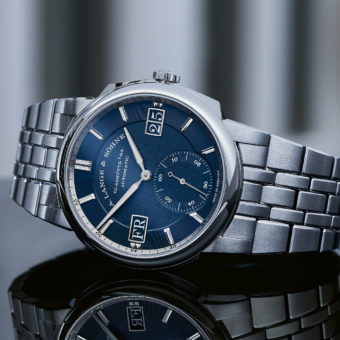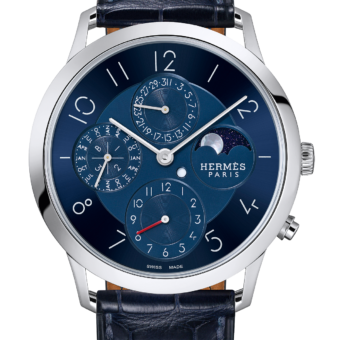Audemars Piguet has a rich history of producing complicated perpetual calendar timepieces, dating back to the 19th century. In fact, the region in which Audemars Piguet was founded – Switzerland’s Vallée de Joux – is widely regarded as the foremost area where much of the development of perpetual calendars has occurred.

Even before Audemars Piguet’s founding in 1875, descendants of the original founders, including Isaac Abraham Piguet (he began his watchmaking apprenticeship in 1753), were already involved in the field of watchmaking in the region.
It is said that 1800 was when the first perpetual calendar was invented, although that date, like many in watchmaking history, is not backed up by conclusive evidence.

Fast forward to the modern day and the Audemars Piguet manufacture is still considered one of the experts in creating perpetual calendar mechanisms.
Audemars Piguet displayed this know-how once again last month, when it launched its new Audemars Piguet Royal Oak Perpetual Calendar collection, consisting of four new models in total: steel with a white or blue dial, and rose gold with a white or blue dial.

The new Audemars Piguet Royal Oak Perpetual Calendars, like the Royal Oaks that were launched in 2012, now come in larger, 41-mm-diameter cases. This new case size warranted a new movement (Caliber 5134), as well as offering more room on the dial with which to increase legibility and add a new function.
According to the manufacture, “The enlarged size has resulted in a ‘Grande Tapisserie’ dial design that greatly increases the overall aesthetics, balance and legibility of the perpetual calendar indications.”
Interestingly, in addition to the prerequisite day, date, month and leap-year functions – and the astronomical moon phase display – the designers added a week counter. A dedicated, centrally mounted hand points to the week (from 1 to 52) on a scale that is printed on the flange.

Audemars Piguet in-house Caliber 5134 is based on its predecessor, Caliber 2120. The automatic movement beats at frequency of 2.75Hz (19,800 vph), with 374 total parts, including 38 jewels, and a 40-hour power reserve. Movement thickness was kept to 4.31 mm, allowing the designers to maintain the thin case dimensions, which typically means a more comfortable fit on the wrist.
Technically speaking, the rose-gold, skeletonized oscillating weight, which can be custom-decorated upon a consumer’s request, is bidirectional, meaning it can wind the movement in both directions of motion. The balance has variable inertia blocks, a flat balance spring, and mobile stud-holder.

The movement is highly finished and visible through the sapphire crystal caseback.
The retail prices for the Audemars Piguet Royal Oak Perpetual Calendar are as follows: $60,900 in steel (Ref. 26574ST.00.1220ST.01 – white dial; Ref. 26574ST.00.1220ST.02 – blue dial) and $95,700 in rose gold (Ref. 26574OR.00.1220OR.01 – white dial; Ref. 26574OR.00.1220OR.02 – blue dial).







I love the Royal Oak perpetual…. it’s the perfect size, however, I would have to sell my home to afford it. Therefore, I would opt for the Apple watch who’s battery and functions are perpetual and will last a life time or two.
To each his own. If you prefer the Apple watch, go for it. The battery will not last a lifetime though. Nor will the AP watch run forever without service. Two totally different worlds, with the only similarities being that they tell the time/date and go on your wrist.
Instead of 94.6 KB or 91.7 Kb, I wish your pictures were larger i.e. 1 MB or bigger, so that we could enlarge the pictures by clicking on them.
I know, I believe it is in the works
AP could make a more affordable line and increase their revenue stream. A 10-15k range would not hurt their brand!
I agree